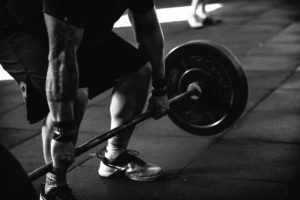Power Exercises and Disc Herniation Part 1
First of all, we should understand what disc herniation is.
By specialists’ definition, the disc herniation is a displacement of a part of a deformed intervertebral disc (i.e. a change in its size and shape).
The most common location of this type of hernia is the lumbar region of the spinal column.
This dislocation can be both inborn and acquired.
The factors of influence are sedentary lifestyle (hyperdynamia), injuries, and ill-advised workouts.
As a rule, however, hernias are grave aftereffects of spinal disorders (osteochondrosis, scoliosis, lumbago, etc.)
I will briefly describe how the disorder in question occurs:
rupture of intervertebral disc
➡ hernia which impacts the nerve root
➡ inflammation
➡ edema.
Here I wish immediately to draw your attention to the fact that intervertebral discs have no nerve endings and receptors and, hence, they cannot cause the sensation of pain.
It is the strangulated nerve ending that sends pain impulses to the brain.

Diagnostics
A diagnosis is made by a neurologist or a neurosurgeon based on the presence of symptoms characteristic of this disorder.
As for the trainer, he is not a doctor in charge and cannot diagnose his customer’s illness.
But the trainer’s sacred debt is to direct his student with pains to a medical specialist and suspend the pole dance training.
Recommendations
The good news is that power exercises are allowed in workouts, provided that this does not contradict the advice of doctor in charge.
Of course, certain restrictions will have to be observed.
There are a row of substantiated medical recommendations:
✔ Minimize the axial stress on the spinal column, especially while working out with weights in the gym (bends, turns);
✔ Avoid exercises that call for a protracted stay in a vertical position (this stems from the first item);
✔ One should also avoid classical sets for the prelum and back bottom.
*Author of the article Kristina Dumanskaya



